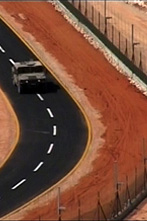 |
THE BARRIER
Loss of land
The construction of Israel’s Separation Wall began on the 16th of June, 2002 and consists of a series of 8 – meter-high concrete slabs, trenches and barbed wire “buffer zones”. Israel originally claimed that the Wall was being built to protect Israel proper from attacks emanating from either the West Bank or the Gaza Strip. However, it is now clear that the Wall constitutes a further effort by Israel to annex Palestinian land and resources, and enclose the major settlement blocks. Despite rulings by both International Court of Justice and Israel’s own Supreme Court, the trajectory of the Wall has not changed. Instead, much like the settlements that it captures, the Wall constitutes a ‘fact on the ground’, or de-facto border, from which Israeli negotiators will begin to bargain.
|
 |
ABU AZZAM
Yayyous
Abu Azzam has spent half his life struggling to preserve Jayyous’s land. In 1980, with other farmers representing villages throughout the West Bank, he founded the Land Defense Committee, one of 18 organizations that now make up the Stop the Wall campaign. Gifted with stubborn optimism, he counts as victory an Israeli Supreme Court decision in April 2006, which pushed the path of the wall back from the south side of the village. The decision returned 11% of Jayyous’s former land — 750 dunams of the 8,600 blocked by the barrier. (A dunam is a little over a quarter of an acre). |
WALL OF INCOMPREHENSION
WEST BANK
The impact of the Israeli seperation wall in the Westbank.
Director and research | 24'00